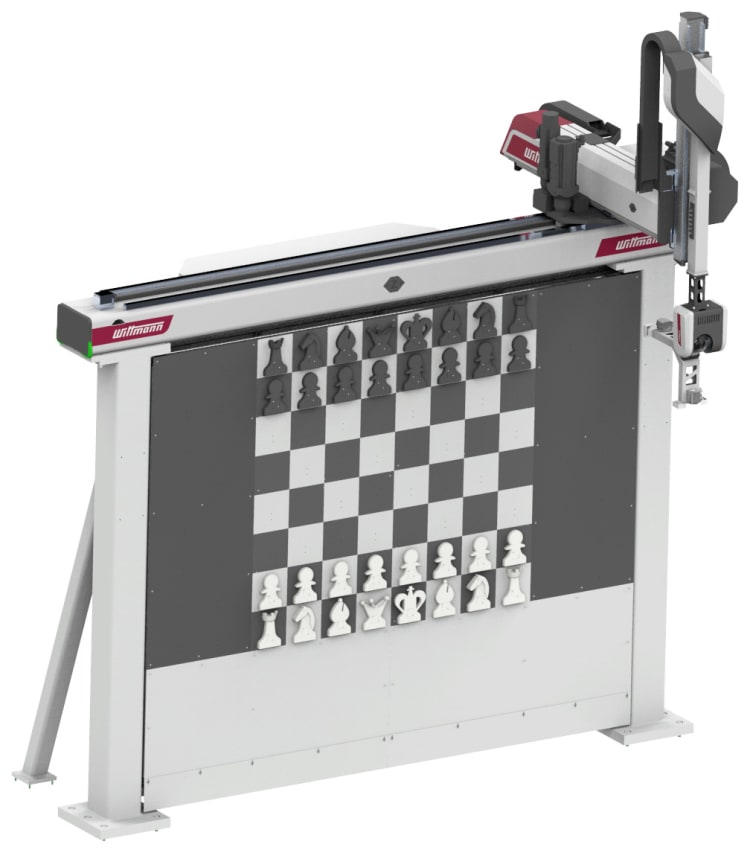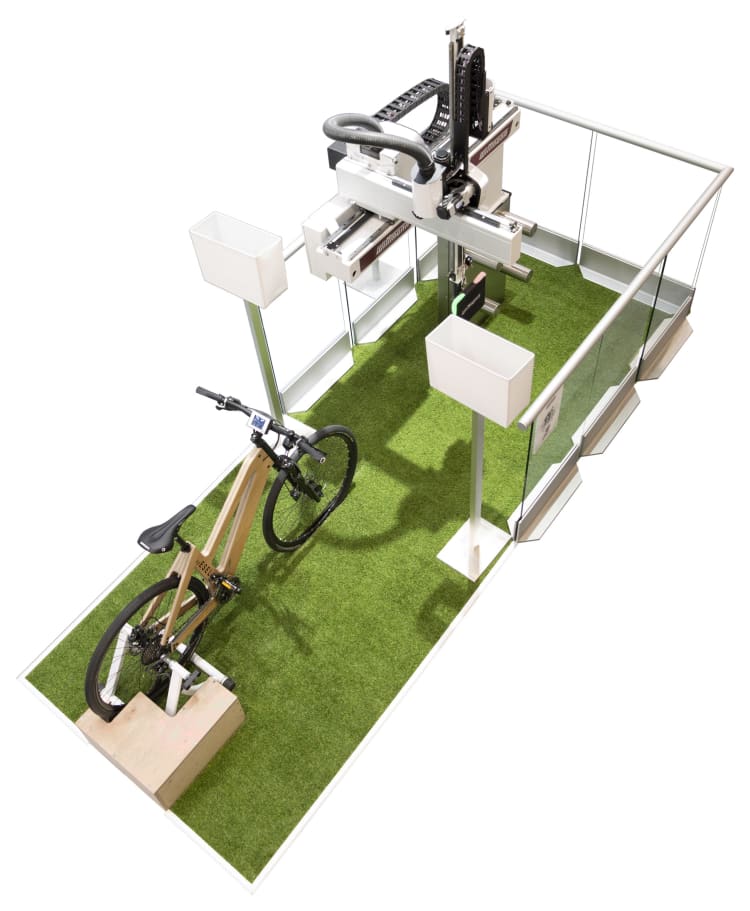Automation
In the area of automation, Wittmann Battenfeld UK Ltd. will demonstrate the function of the Sonic highspeed robot by means of a chess game with a Wittmann Sonic 143. The robot is equipped with a combined A/C servo axis and an L-shaped gripper fitted with two individual magnetic gripping systems to handle the chess pieces. The second one of these two grippers comes into play whenever a chess piece is to be captured, that is, replaced by another piece on a particular field.The chess pieces themselves were produced on a 3D printer and have a metal core, so that they can be moved by the metal grippers. The robot, the gripping systems and the chess software are all controlled by the latest Wittmann R9 robot control system. Thanks to its open program interface, this system allows the integration of an open-source chess software. The Sonic 143 has the option of playing either against itself or against a challenger from among the trade fair visitors. At the Wittmann Battenfeld booth, all visitors are offered the opportunity to compete against the Sonic 143 in a lightning chess game with 3 min playing time, where they can enter their moves via a virtual chess board shown on the display of the Wittmann R9 TeachBox.

Chess board with Wittmann highspeed robot Sonic 143
The low energy consumption of the Wittmann robot series will be demonstrated at the Interplas by an interactive showpiece known as the ErgoRobot. This application consists of a robot and a bike used as an ergometer. The trade fair visitor serves as the “power source”. While riding the bike he sets the robot in motion. The robot used in this case is a Primus 14 in the standard version with an R8 control system, an appliance normally used for pick & place applications on machines with clamping forces ranging from 50 to 150 t. The moving bike pedals drive via force transmission a servo motor mounted on the rear wheel. In the ErgoRobot application, this motor functions as the robot’s power supply. The electricity generated by the motor is transmitted to the robot and sets it in motion.
To enable the Primus 14 to move at 100% of its top speed, the bike rider must generate about 150 watts of power. This is roughly the power required by an average refrigerator with freezer compartment to suit a four-person household. If more power is generated on the bike, the surplus is used to light two floor lamps placed next to it. The brightness of the lamps then depends on the amount of additional power supplied.

ErgoRobot with Wittmann robot Primus 14




